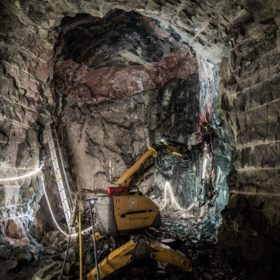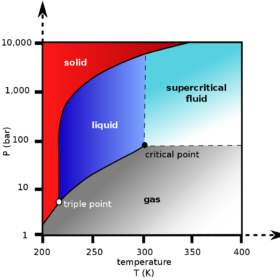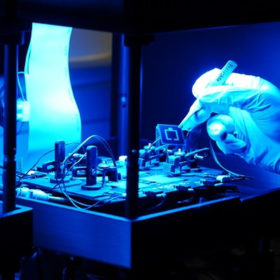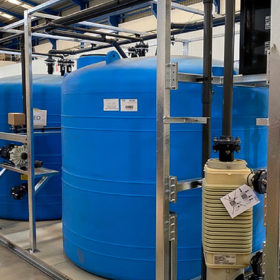Rock cavern for green hydrogen storage takes shape in Sweden
Vattenfall, SSAB and LKAB have reached the halfway point in the construction of a rock cavern storage facility in a coastal city in northern Sweden. The 100-cubic-metre facility is being constructed 30 metre below ground and will begin storing green hydrogen next year.
Could Russia’s actions in Ukraine accelerate renewables investment?
Given the goings-on in the world this last quarter, Mike Jefferies, Investment Manager at Octopus Investments Australia, takes a look at the current macroeconomic environment, how this is tied to energy markets, the impacts Russia’s invasion of Ukraine has had on that energy market, what this could mean for Australia and how renewables could help address these issues.
Hydrogen-powered trains for the German network
Elsewhere, the Danish government announced a plan to deploy up to 6 GW of electrolyser capacity by 2030 and Germany and Norway agreed to conduct a feasibility study on large-scale hydrogen transport, including via pipeline.
Storing renewable electricity with supercritical CO2 heat pump
Researchers in Spain have designed a pumped thermal energy storage system that uses supercritical carbon dioxide as a heat pump and a heat engine. The proposed system is claimed to achieve an efficiency of 80.26% and an LCOS of €0.116/kWh (AU$0.18/KWh)
WA company to partner with Mercedes-Benz, building carmaker’s first foray into battery recycling
German luxury carmaker Mercedes-Benz has made public its plans partner with Primobius, a 50:50 joint venture between West Australian company Neometals and Germany’s SMS Group. Mercedes has said its intention is to build a 2,500 tonne per year lithium-ion battery recycling plant in southern Germany with Primobius as its technology partner.
Fully autonomous robot for solar O&M
OnSight Technology has developed a tele-operated vehicle to clean solar arrays. It is equipped with a radiometric thermal imaging camera and an optical zoom camera backed by artificial intelligence. It has a range of 12 hours and a speed of 1.6 km per hour.
Thermally integrated PV-electrolyser with 9.1% solar-to-hydrogen efficiency
A Swedish research group has developed a device combining CIGS thin-film solar modules and an alkaline electrolyser based on a trimetallic cathodic catalyst made of nickel, molybdenum, and vanadium (NiMoV) and an anode made of nickel oxide (NiO). The electrolyser achieved an average solar-to-hydrogen (STH) efficiency of 8.5% for stable operations during 100 hours.
Q Cells, German researchers claim 28.7% efficiency for 2T perovskite-silicon tandem solar cell
The Korean manufacturer and the German research centre were able to improve the performance of their jointly developed tandem solar cell by almost one percentage point.
‘Green aviation revolution’: Fortescue teams up with Airbus
Fortescue Future Industries and Airbus have formed a partnership, saying they will work together to realise a green hydrogen-based aircraft by 2035.
Hybridising PV, redox flow batteries and geothermal heat pumps
A Spanish consortium is equipping one of Madrid’s largest metro and bus stations with a hybrid system that combines PV, geothermal pumps, and vanadium redox flow batteries to provide cooling and heating.















